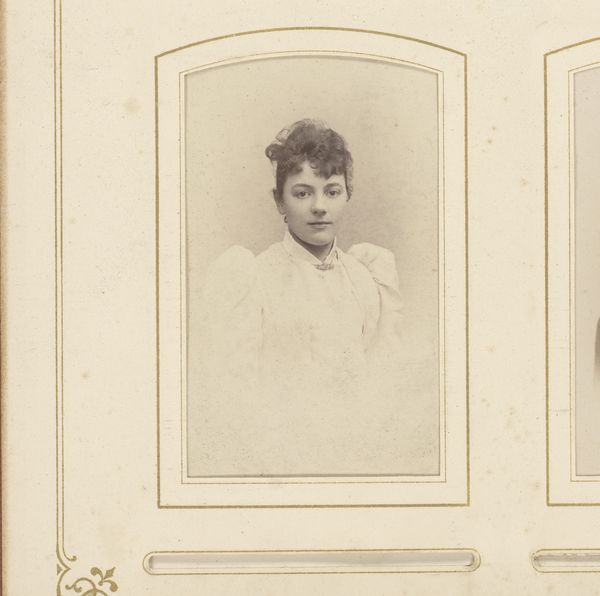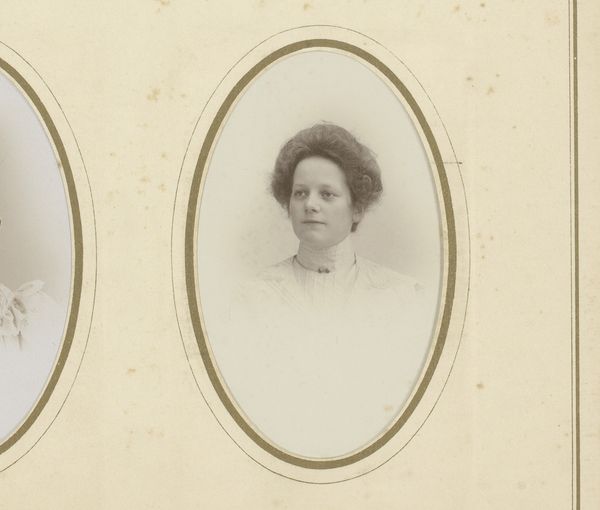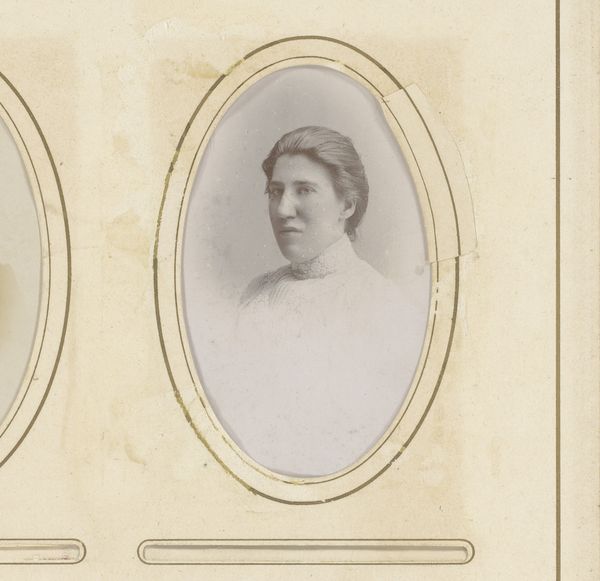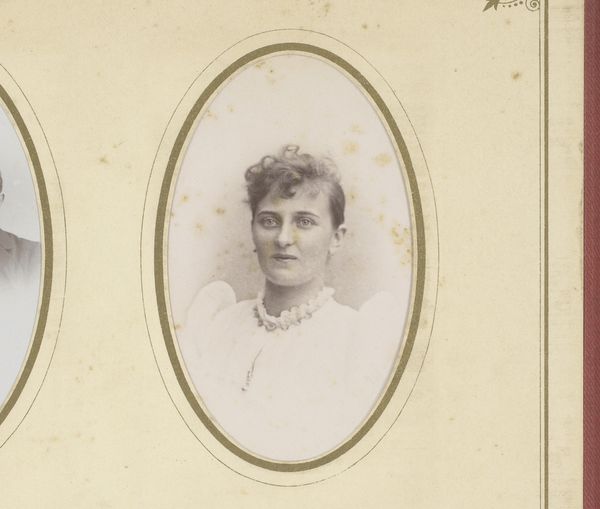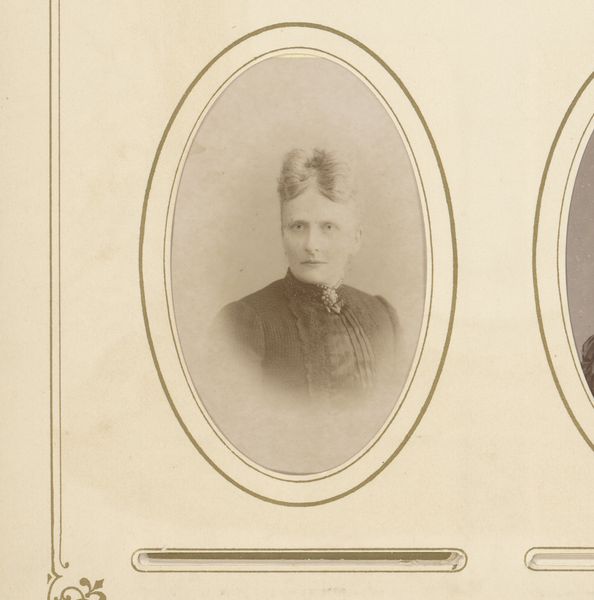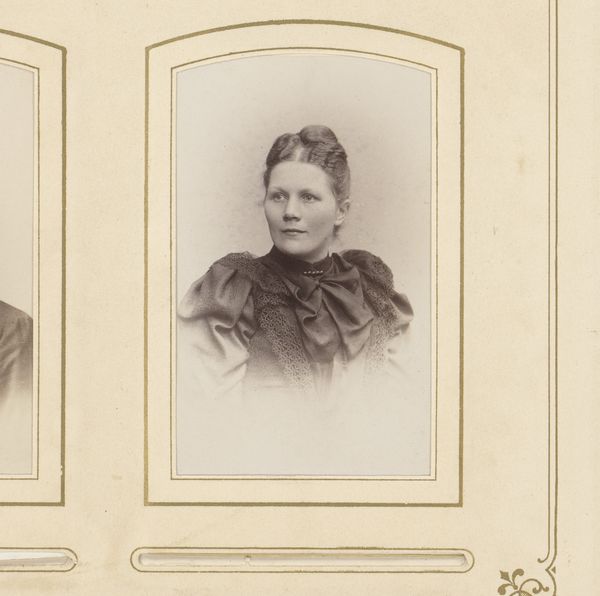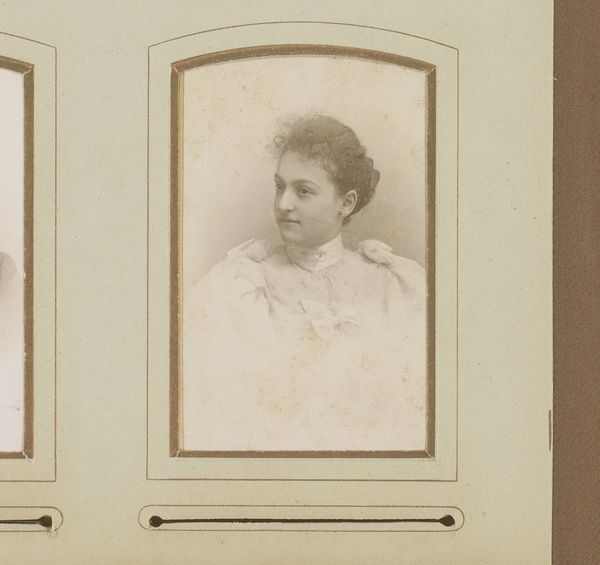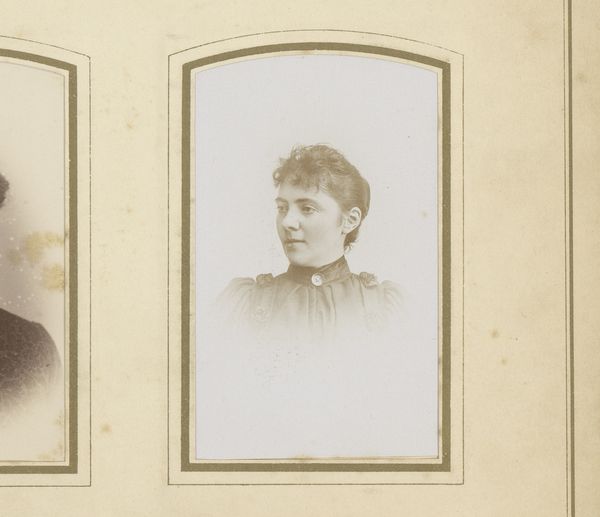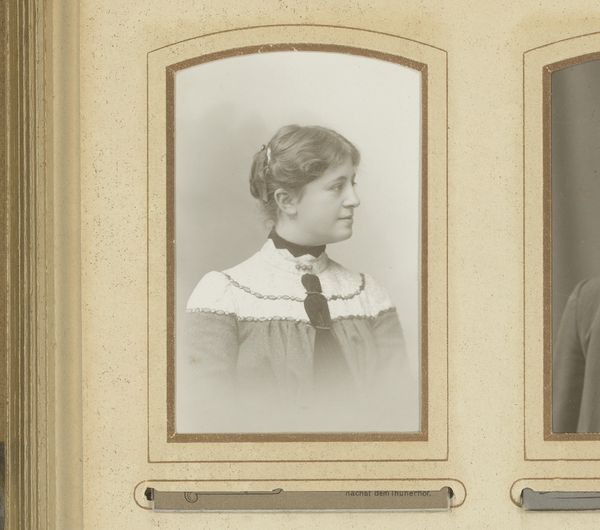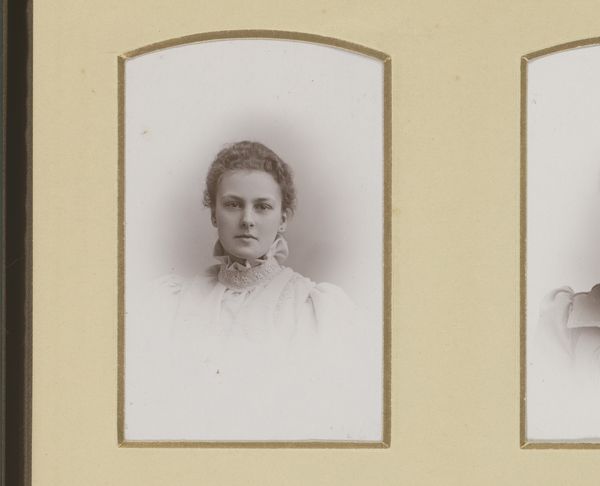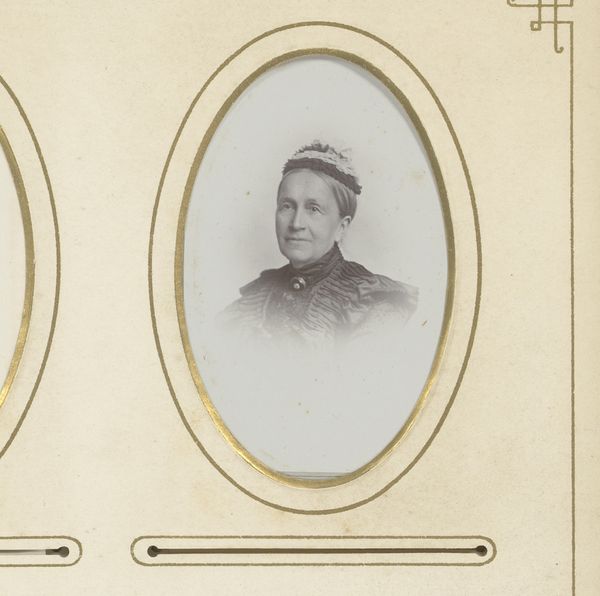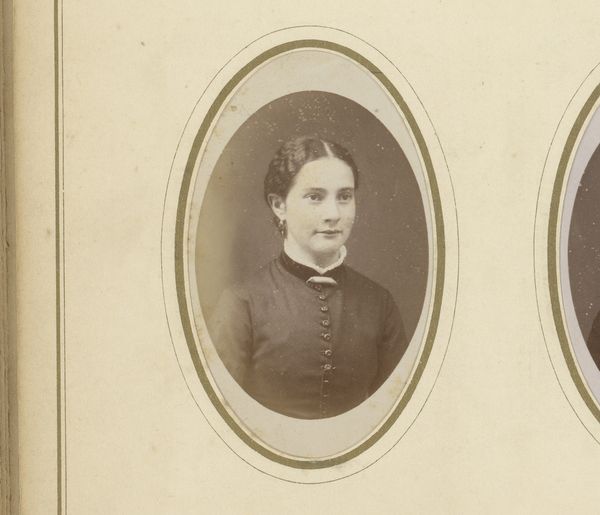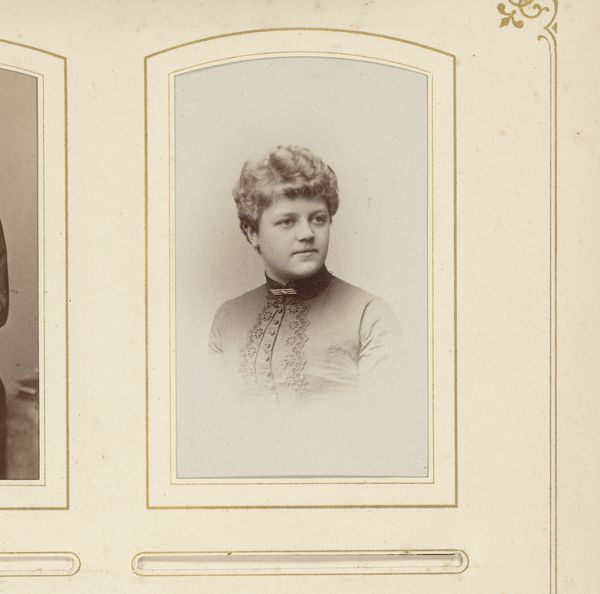
photography, gelatin-silver-print
#
portrait
#
photography
#
historical photography
#
gelatin-silver-print
#
realism
Dimensions: height 85 mm, width 51 mm
Copyright: Rijks Museum: Open Domain
Curator: This is "Portret van een vrouw," by Richard Klepsig, made sometime between 1880 and 1940. It's a gelatin-silver print photograph. Editor: My first thought is about innocence and constraint. The oval frame combined with the muted tones creates this kind of sealed, almost precious object. It’s intriguing. Curator: Indeed. These types of portraits from this period capture not just individual likeness but also the social codes governing representations of women, particularly within the burgeoning middle class. This aesthetic became its own language for idealizing femininity and marking respectability. Editor: You're right; the clothing does much of that work. The high lace collar, the carefully arranged hair, all signal virtue, but beyond that, lace historically becomes shorthand for prosperity, leisure, and domestic ideals. What would have been considered moral in this woman's life? Curator: Precisely. These visual signifiers worked to normalize behaviors. By looking closer, we must acknowledge that gender roles, class structures, race and economic dynamics were communicated in how one presented oneself for the photograph. This type of photographic portraiture reveals the construction of identity, showing how much is performed rather than inherent. What do you read in the background treatment? Editor: The simplicity amplifies the subject but it also hides a reality of the sitter, who she was, what she liked. Her story. Even so, these portraits leave clues of shared identity, allowing us to connect to what persists despite historical distances. What are we to do with her serene composure? Is it a stoicism enforced by a male-dominated industry, or is this an attempt at asserting agency within restrictive parameters? Curator: That is an incredible question and exactly what makes works like this endure; despite all of our progress, are we as different as we seem? Editor: Reflecting on it all, I wonder how future viewers will understand our own constructed identities through the digital images we generate today. There are definitely parallels and maybe she feels them too.
Comments
No comments
Be the first to comment and join the conversation on the ultimate creative platform.
